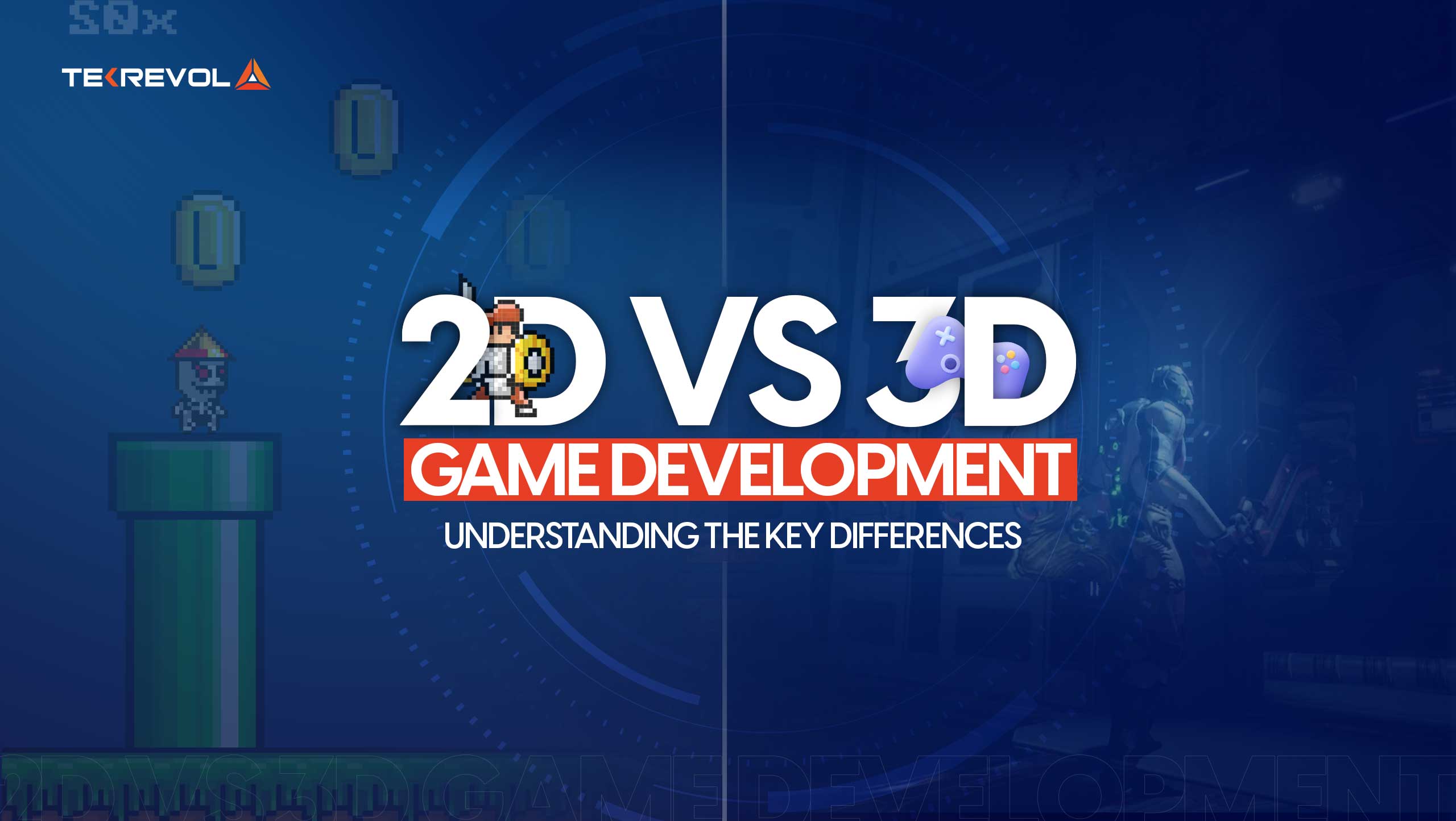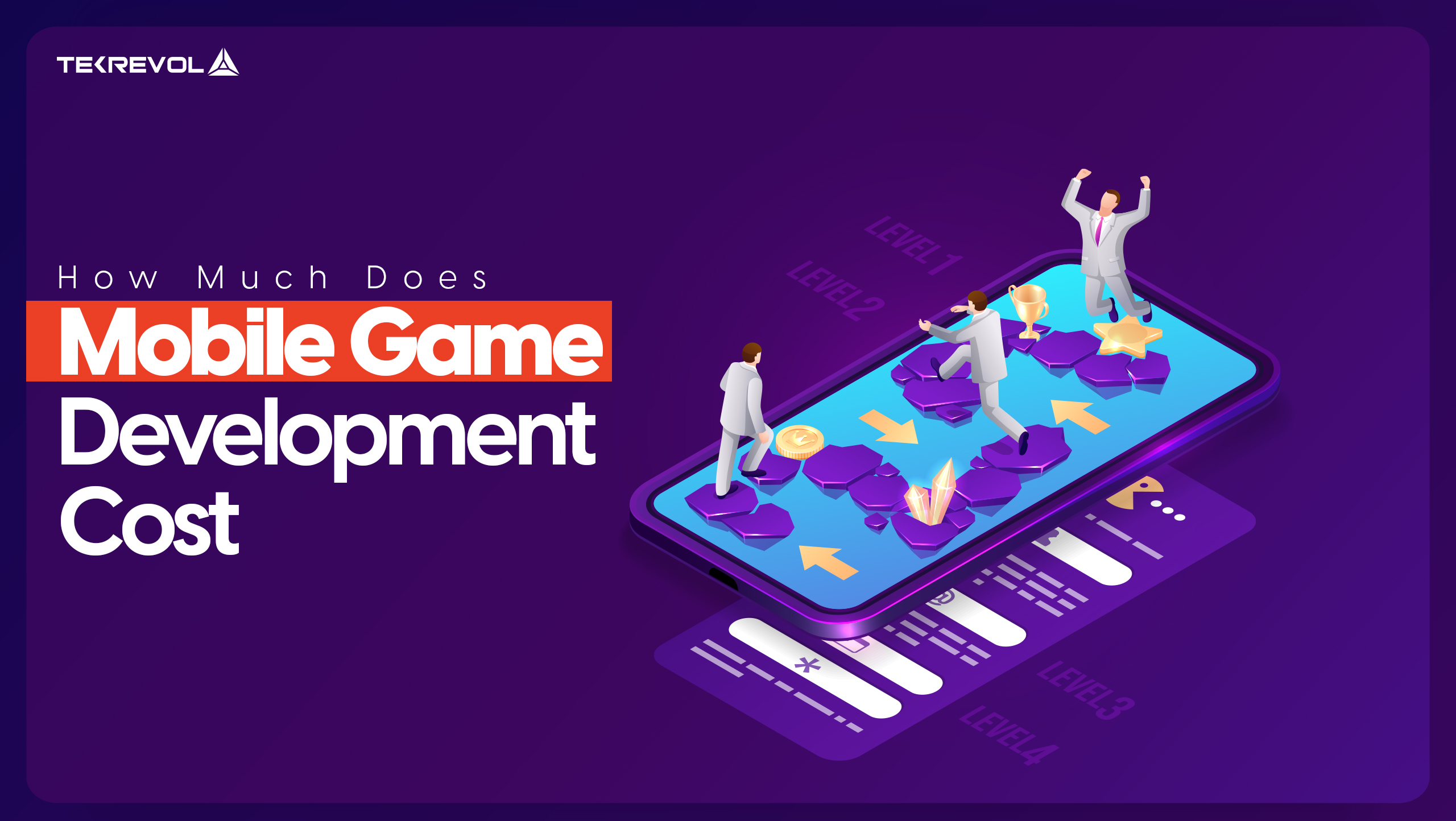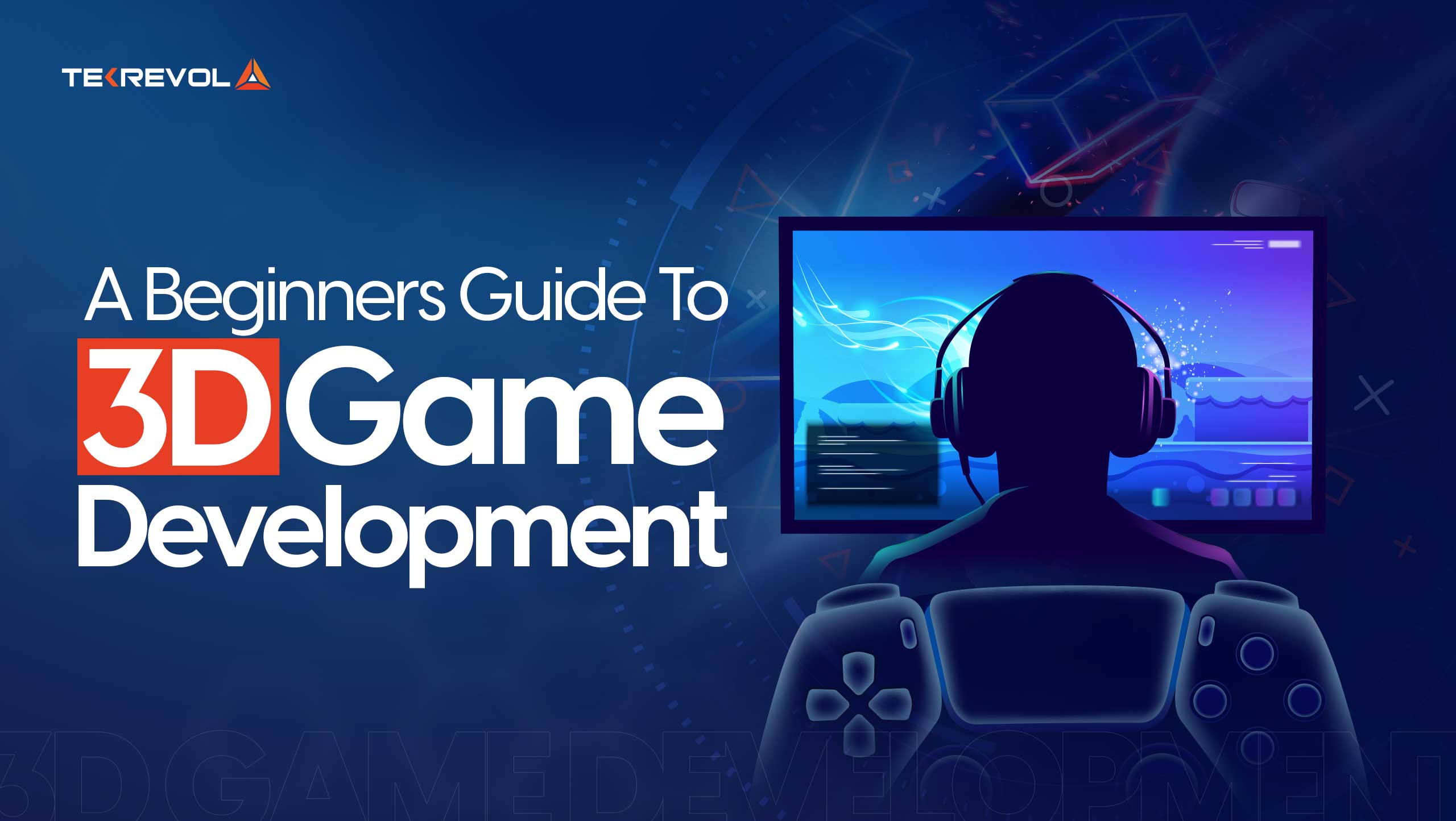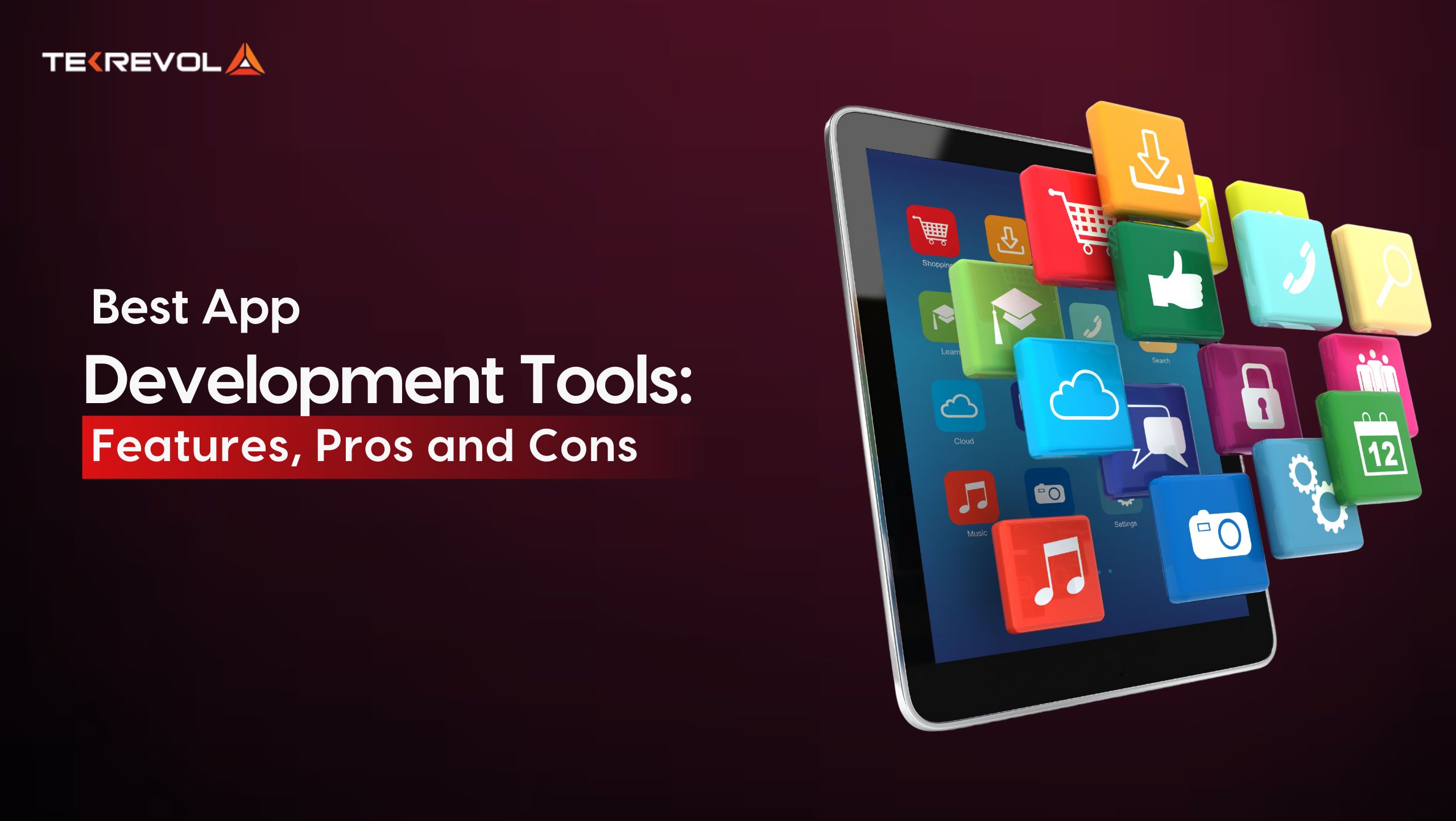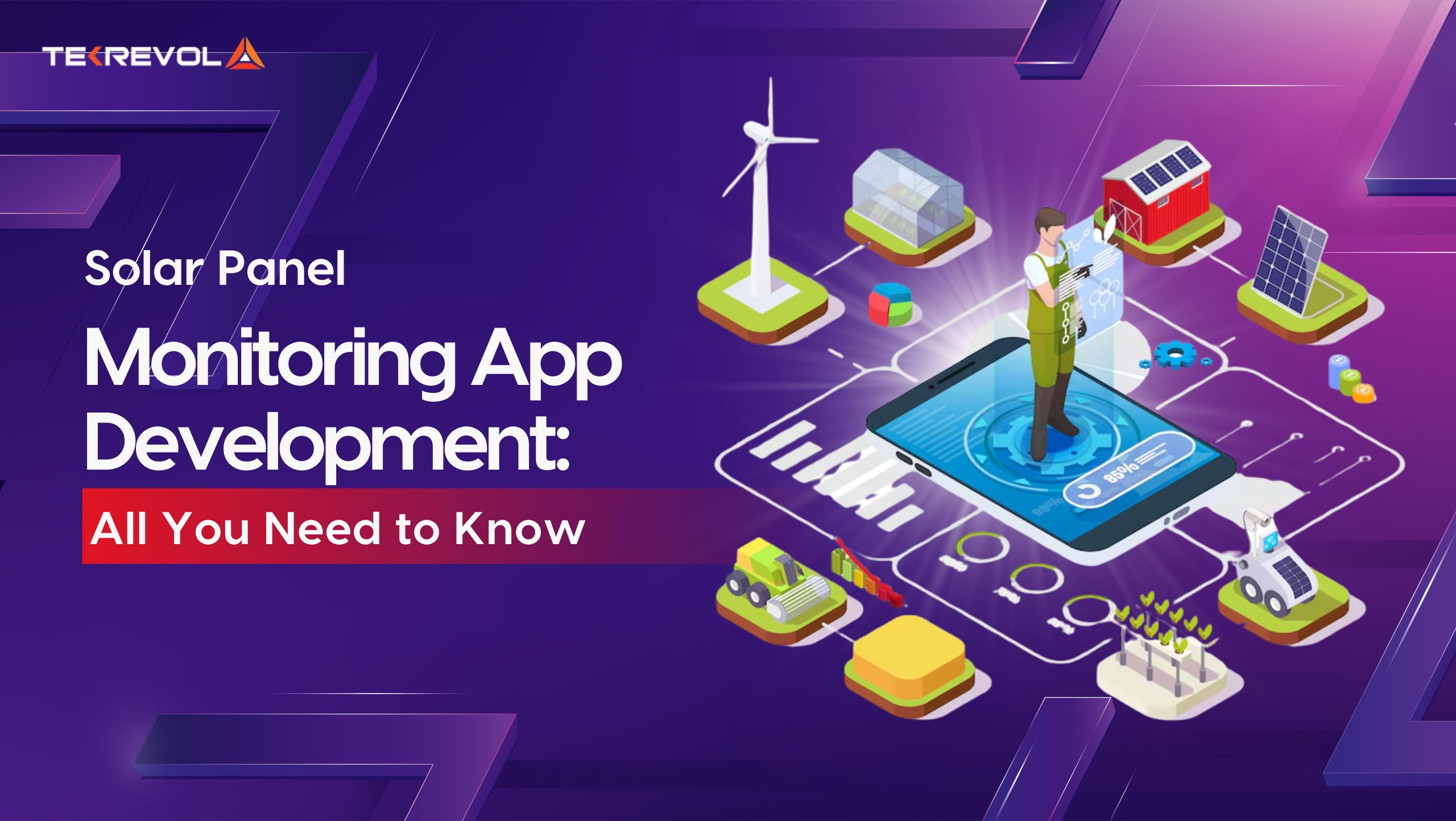From the beginning, one of the major decisions a game designer needs to make is to decide between 2D vs 3D game development. Though many artistic choices are made during the game’s creation, the graphics and art style truly stand out.
For instance, Ori and the Blind Forest and The Last of Us: Part II show that graphics can make games even more enjoyable. A 2D vs 3D game development choice can significantly impact the gameplay mechanics, design complexity, and audience reached.
In this blog, we break down the technical, creative, and financial factors that draw a clear decision in the 2D vs 3D game development debate to give you an insight into making a decision.
The Evolution of Gaming: From Early Arcade Titles to Modern 3D Blockbusters
The dawn of video games saw players crowding arcade halls, mesmerized by simple pixels and beeping soundtracks. Titles like Pong and Space Invaders ushered in an entirely new form of entertainment within a still-nascent gaming industry. Even at this early stage, the thrill of completing levels hinted at the immersive experiences to come.
By the mid-1980s, franchises like Super Mario Bros. redefined what a platformer could be, showcasing colorful pixel art and tight controls. This two-dimensional style dominated home consoles, reflecting the limitations of the time. Yet, the groundwork was laid for a future revolution that would introduce fully realized three-dimensional space and deeper gameplay.
Today, sprawling 3D worlds captivate millions of players worldwide, highlighting how far the industry has progressed. Whether it’s an open-world RPG or a realistic sports simulator, modern video games now leverage cutting-edge technology to deliver life-like visuals and heightened immersive experiences. The transition from simple arcade sprites to advanced 3D modeling marks a defining milestone in gaming’s evolution.
- Have a brilliant game idea?
- Share your ideas with our team to find the perfect approach for your project and make it a reality!
The Shift from 2D to 3D in Video Games: A New Era of Immersion
The shift of video games from 2D to 3D visuals makes them user-friendly. Because of the emergence of the Skyrim title in 2011, gamers became accustomed to playing in a world that seemed full of complex characters and complex quests that simply could not be viewed properly in any 2D game.
With the advent of 3D technology, developers were able to incorporate more elements of gameplay, like dynamic settings and realistic physics. By giving the game environments a realistic appearance, techniques like normal mapping and graphics shaders enhanced the lower-level details.
This game development trend changed the way games were played and gave depth to the storytelling of the games, which included modern stories and adventures of the gamification.
Difference Between 2D and 3D Games: What Sets Them Apart?
The distinction between “2D” and “3D” in video games hinges on their dimensional structure. 3D games provide a sense of realism and depth, allowing players to explore richly detailed worlds. On the other hand, 2D games, with their flat designs, often create a different style of gameplay that emphasizes simpler mechanics and linear progression.
This fundamental dimensionality impacts how players engage with the game, with 3D offering a more immersive experience.
-
Movement
Movement in 2D games is often linear, which means that the character moves along a defined axis with a more or less defined path from one point to another. In 3D games, players could move freely in any possible direction and explore open environments, thus creating dynamic gaming possibilities.
Examples
In Cuphead (2D), players mainly move horizontally, whereas Breath of the Wild (3D) enables climbing, gliding, and multi-directional traversal.
Similarly, Ori and the Blind Forest requires precise 2D jumps, while Elden Ring lets players sprint, dodge, and climb in a vast 3D realm.
-
Environment
This is the most distinctive aspect of 3D games. A 3D game always has a detailed environment with beautiful landscapes and highly realistic surroundings. In the case of 2D games, simplicity is given preference and less importance to the environment, but more emphasis is on core gameplay and stylized visuals.
Examples
Celeste (2D) relies on minimalistic mountain scenes, while Assassin’s Creed Odyssey (3D) presents sprawling vistas rich in architectural details.
-
Controls
Control of 2D games tends to be simple which therefore makes them accessible even for beginners. To the majority though, detailed schemes of control often needed for playing games in three dimensions are tougher and urge participation within the game but do require a little time before learning how to play.
Examples
Shovel Knight (2D) uses a few inputs, while Grand Theft Auto V (3D) involves driving, shooting, and full camera control.
-
Development Resources and Time
Building detailed environments in 3D requires more development resources, typically involving an experienced developer team and larger budgets. Unlike simpler 2D pixel art, 3D titles demand asset creation, lighting, and complex level design, extending production timelines.
Choosing which type of game to create hinges on available funding and technical capabilities, ensuring the scope aligns with the studio’s goals and deadlines.
Examples
A small team might craft Limbo (2D) within months, but Horizon Zero Dawn (3D) required hundreds of developers and years.
-
Immersion and Realism
Complex mechanics like realistic physics, dynamic camera angles, and optional virtual reality integration deepen immersive experiences. By leveraging three-dimensional graphics, developers simulate natural motion and environmental effects, drawing players further into the game world. This realism elevates emotional engagement—whether exploring eerie dungeons or bustling cityscapes—and underscores how robust design elements provide an all-encompassing sense of presence.
Examples
Resident Evil 7 VR thrusts players into intense horror, whereas Dead Cells (2D) relies on fast combat without full realism.
-
Graphics
In 2D titles, designers often rely on stylized pixel art or clean flat graphics, creating iconic visuals without extensive hardware demands. 3D games instead utilize polygonal models, lighting, and shaders to form three-dimensional space, yielding lifelike or fantastical worlds with nuanced visual flair. Each approach can evoke a unique mood, matching the game’s genre and creative goals.
Examples
Stardew Valley (2D) uses charming pixel art, while The Witcher 3 (3D) delivers vast realism through high-fidelity textures and dynamic lighting.
-
Complexity & Scope
Creating a 3D action-RPG or open-world adventure often entails broad storylines, intricate level design, and larger development resources. In contrast, a 2D puzzle game or collectible card game typically focuses on streamlined mechanics and art assets.
Balancing scope is key: smaller teams might excel in 2D, whereas more ambitious 3D worlds require a bigger budget and extensive collaboration.
Examples
Fez (2D) leans on clever puzzles and rotating stages, while Mass Effect (3D) spans entire galaxies with deep lore.
-
Storytelling & Cinematics
Many modern 3D games integrate cinematic cutscenes, voice acting, and branching narratives to enhance gameplay experiences. Meanwhile, 2D titles might rely on text-based or minimalistic storytelling methods that still captivate players through imaginative art styles and atmospheric music.
oth approaches can deliver engaging stories; the choice depends on target audience, type of game, and resource availability.
Examples
2D gems like Ori and the Blind Forest rely on visual storytelling, whereas Final Fantasy XV (3D) employs epic cinematics.
-
Objectives
Objectives in 2D games are simple and align with the linear gameplay and mechanics. The complexity of objectives in 3D games is much more extensive, allowing for more complex gameplay and paths for the player to take on side missions and sandbox-like interactions.
Game Design Flexibility
In 2D development, simpler game designs often focus on approachable puzzle games or a collectible card game, delivering quick hits of fun without extensive world-building.
By contrast, 3D allows for branching storylines and vast open-world traversal—ideal for broader game genres like RPGs or survival shooters. Each approach tailors its gameplay experiences to match available resources, player preferences, and creative ambition.
Ultimately, understanding these formats lets studios align project scope with audience expectations, maximizing game design flexibility while enhancing entertainment value.
Examples in Action
2D favorites like Hollow Knight, Super Mario Bros., and other retro games showcase iconic art styles and straightforward progression.
Meanwhile, 3D blockbusters such as Elden Ring, open-world RPGs, and the occasional first-person shooter video game highlight complex interactions with a higher level of graphics. Each approach transforms how players experience challenges, visuals, and storytelling within their chosen genre.
2D Vs 3D Fighting Games: Which Is Better
Choosing the best games between 2D and 3D is hard as they both possess immerse strengths and attraction. 3D games such as Tekken and Final Fantasy depend entirely upon movement and position.
While 2D games like King of Fighters and Street Fighters depend on timing and accuracy. It is basically a player’s choice but both 2D and 3D games are intense and expected for full joy.
Key Applications of 2D vs 3D Game Design
Whether to build a 2D or 3D game is usually determined by specific objectives and targets as well as the user interface that will be used. It is now time to discuss what kind of advantages each possesses and where it exceeds the most.
Advantages of 2D Game Design
Accessibility and Simplicity: The most important difference in favor of the 2D games is that they are easier to grasp, perfect for starters and those who don’t play computer games often. They draw in a wide audience base and cater to all levels of skill due to the ease of using the controls and playing the games.
Cost-Effective and Faster Development: Originally, the development of 2D games was more efficient in terms of time and other resources required than that of 3D games. Such efficiency enables developers to design updates and new levels and since the gameplay is usually short and very engaging this makes the 2D suitable for hyper-casual games.
Straightforward Engagement: Since the goals of 2D games are easy to understand, and their mechanics easy to master, the games provide simple entertainment. They are generally ‘pick-up-and-play’ games, thus highly suitable for portable platforms and casual/ social gaming.
Advantages of 3D Game Design
Immersive Realism: The first advantage of three-dimensional economic models is that the environments appear more realistic, which typically attracts hardcore players. This extra dimension improves the experience of exploring, interacting, and even fighting in these environments.
High-quality visuals and Rich Detail: 3D games offer highly realistic three-dimensional environments, they may include intricate graphics and detailed imagery to create a fascinating impression for players who appreciate highly detailed environments. Many games, particularly those with better components such as texture, lighting, and other features, will always be excellent pieces of art.
Expansive Gameplay and Freedom: Using many planes in gameplay makes these games more engaging by incorporating various motions, choices, and strategies into playing fields. These games are better suited to game genres including extensive tasks, an active environment, and an open world feel.
Top 2D and 3D Game Development Tools
With the abundance of game development tools available today, both inexperienced and seasoned creators can work on relevant and efficient platforms. An outline of some of the most often used programs for making 2D and 3D games is provided below:
1. GameMaker Studio 2
If you’re specifically looking at 2D platformers, there is GameMaker Studio 2 which is easy to use and offers a trial for free. Popular for making games such as Undertale, it is easy for newcomers with a lot of tutorials on how to create.
GameMaker Studio 2 becomes a top choice for any 2D game development company, because of its integrated scripting language, GML, which enables the creation of custom game logic for distinctive gameplay experiences.
2. Construct 3
Developed as a tool for 2D games, Construct 3 is an HTML5-based software that enables users to create games with no coding experience. The ease of use is because it uses a drag-and-drop system and the user can build games for Windows, Mac, iOS, and Android. Construct 3 also has an online community for more support making it ideal for primary builders.
3. Unity
Formerly designed for only 3D games, Unity has a 2D option now and it has become one of the most favorite game engines for indie developers. Although basic knowledge of C# is needed for this tool, some numerous lessons and guides make it fairly easy to master. Unity supports the exportation of games to almost any platform possible, catering for both 2D and 3D games.
Unity’s powerful capabilities for creating detailed, immersive environments make it a top choice for studios that provide 3D game development services.
4. Godot
Godot is an open-source game engine for developing 2D and 3D games. It uses the GDScript language and a visual editor, and it is an excellent tool for 2D games, as it provides drag-and-drop facilities. However, the engine has fewer users than other search engines, making it challenging for a novice to find the necessary resources to resolve issues.
5. Unreal Engine 4
Unreal Engine is particularly known for the ultimate quality of the 3D games and excellent graphics. Though more complex and often well-suited for professional developers, it has a Blueprints visual scripting system that enables designers to create games without coding.
Hence, projects requiring AAA-quality visuals thus turn to an Unreal game development company to avail of the advanced tools and capabilities of the engine. Even though Unreal poses a steep learning curve as well as demands quite demanding system resources, it continues to be the go-to for elite 3D game immersion.
How Much Does It Cost to Develop a 2D or 3D Game?
The cost of game development largely depends on several factors such as the choice of the game engine, the sophistication of graphics, gameplay, needs for the soundtrack, and how the development team will be structured.
It’s important to note that you can’t develop a 3D game for the price of a 2D game; the game development comparison makes it clear that the complexity and resource intensity of 3D projects lead to increased costs.
Cost Examples Across Games
For instance, simple games like Flappy Bird are said to have a cost of about $300 because of the mere mechanics and low graphics they have. More complex games like Candy Crush for example can cost up to a hundred thousand dollars because they are deep, graphically designed, and have updates as well.
Meanwhile, the developing budget for the much-flaunted augmented reality game Pokemon Go is around $650,000 on the other hand, great titles like GTA V bring their costs up to about a staggering $265 million, in part because these have complex 3D environments, detailed graphics as well as ample content in them.
General Cost Trends
Generally, the development of a 2D mobile game app is much cheaper than that of a 3D game. Not because 2D games are not extensively supported, but because 3D games seem to offer a whole different level of detail and realism and complexity, thus expenses.
Outsourcing Options
However, if you lack the skills and motivation to create games on your own, outsourcing the game to a mobile game development company is the most practical option.
TekRevol is an innovative game development company with great experience in developing interesting games in 2D and 3D formats as well as across different domains such as web gaming, mobile, and virtual reality (VR).
Our pioneering approach and best practices for 2D and 3D game design result in immersive experiences that engage players. Especially, our portfolio features the ‘Ether Legends‘ story, a testament to a commitment to excellence and creativity in game development.
Detailed Cost Breakdown Table
Below is a quick reference comparing average budgeting for 2D vs. 3D game development. Each factor contributes to the final expenditure, so understanding how three-dimensional graphics, game engines, and development team size scale your costs is vital.
Use these cost examples as a starting point, then adjust to align with your project’s unique needs and make an informed decision.
| Cost Factor | 2D Approximate Range | 3D Approximate Range |
| Art/Assets
(e.g., pixel art vs. three-dimensional graphics) |
$5,000 – $15,000
(Basic sprites) |
$30,000 – $100,000+
(Models, textures, 3D animation) |
| Development Team | 1–5 developers
(Often indie developer) |
10+ developers
(Can require a larger team) |
| Game Engines
Licensing & Tools |
$0 – $2,000
(e.g., free/low-cost tiers) |
$5,000 – $50,000
(Advanced features, custom plugins) |
| Marketing | $1,000 – $5,000
(Small campaigns) |
$10,000 – $100,000+
(Global reach, events) |
| QA & Testing | $1,000 – $4,000
(Limited scope) |
$8,000 – $30,000+
(Complex debugging) |
- Ready to bring your game idea to life?
- For 2D or 3D game development, TekRevol is here to support you at every stage!
How to Make the Right Choice Between 2D and 3D?
Choosing between 2D and 3D for your type of game requires balancing ambition, resources, and creativity.
Each format can produce compelling gameplay experiences, but the path you take should reflect your target audience and desired scope. From budget constraints to realistic physics demands, every decision impacts your team’s ability to deliver a polished final product.
Below is a brief step-by-step mini-guide to help you navigate these considerations and arrive at an informed decision.
Define Your Type of Game
Start by clarifying your genre and overall style. Are you designing a casual mobile title, an AAA epic, or a puzzle game aimed at quick bursts of fun? Aligning your type of game with 2D or 3D early on will shape your development roadmap and set clear expectations for the final player experience.
Assess Budget/Time
Next, consider your financial resources and timeframe. Are you an indie developer working with minimal funding, or do you have a larger team and ample capital? 2D production can be more affordable and quicker to develop, whereas 3D often requires higher spending on technology, artistry, and testing to achieve immersive environments.
Pick Suitable Game Engines
Look into reputable game engines like Unity 3D or Unreal Engine. Each platform offers specific advantages, from streamlined 2D workflows to advanced 3D rendering and physics simulations. Licensing costs, plugin availability, and community support may influence your choice, so weigh these factors carefully before committing.
Evaluate Required Realistic Physics or Immersive Environments
Decide whether your game demands realistic physics and richly immersive environments. Titles requiring detailed combat, dynamic weather, or massive open worlds typically benefit from 3D. In contrast, 2D can excel at platformers, shooters, or story-based adventures without full 3D complexity.
Make an Informed Decision
Combine your insights on budget, type of game, engine capabilities, and desired realism. By balancing these elements, you’ll form an informed decision that ensures a fun, stable product. Ultimately, whether 2D or 3D, the goal is to deliver memorable gameplay that resonates with your target audience.
Why People Prefer 3D Games Over 2D Games
We all love 2D games ourselves, but there is something about the depth and richness of 3D games that just can’t be replicated.
- Immersive graphics: Owing to advances in technology, 3D game developers can now create simply stunning scenery and characters that take players away from reality to a world far and away from earth. The depth of detail and intricacy is simply unbelievable, and it comes as no wonder that players just can’t get enough.
- Realistic animations: From the walk of a character to the way his hair moves in the air, 3D games have perfected realistic animations. It’s as if you’re seeing a movie that you’re controlling, and the immersion is unparalleled.
- Interactive play: 3D games give you interactivity and engagement that is just not possible with 2D games. Whether you’re visiting a new world, battling hard foes, or uncovering secrets, the play in 3D games is constantly new and surprising.
The Bottom Line
The future of 2D vs 3D game development will likely coexist, each carving out its niche in the gaming market. But If you’re confused about how to choose between 2D and 3D development, then remember that games are different in terms of features about movement, camera view, graphics quality, tools, and testing. Therefore, the final decision depends on your vision for your game. If you are trying to make a lightweight, inexpensive, and quick game, then 2D is your best way to go. But if you are going to develop a more visual and interactive game, then 3D would be worth your investment.
Player preference is also essential in your game for success because an exciting game can keep users engaged for much longer. Pleasing graphics will increase user satisfaction as well as retention. Choosing your game also requires thought for the target audience as well as their gaming habits to make it appeal best to the intended players.

 5470 Views
5470 Views March 18, 2025
March 18, 2025